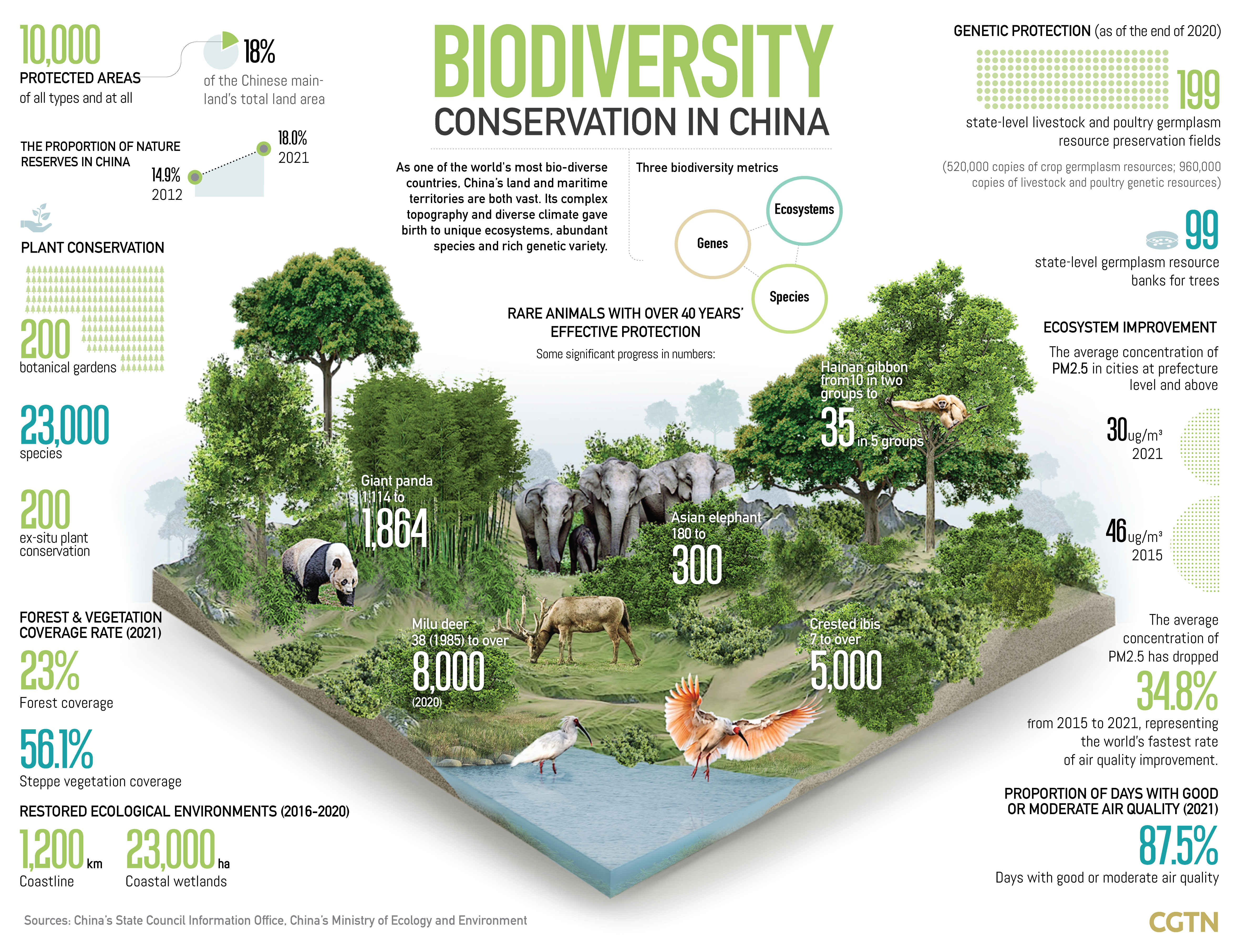The second phase of the 15th Conference of the Parties to the United Nations Convention on Biodiversity (COP15) started on December 7 in Montreal, Canada.
One of the most important agenda items is for the parties to determine the Post-2020 Global Biodiversity Framework. Negotiation of the framework began in 2019 and the first official draft was released on July 12, 2021. According to the first draft by the UN Environment Programme, the Post-2020 Global Biodiversity Framework builds on the Strategic Plan for Biodiversity 2011-2020, aiming to implement broad-based action to bring about a transformation in society's relationship with biodiversity.
At the opening ceremony of the COP15, Huang Runqiu, president of COP15 and China's minister of ecology and environment mentioned that "China will continue to exert its leadership in promoting substantial results in negotiations on the post-2020 global biodiversity framework."
As one of the world's most bio-diverse countries, China's land and maritime territories are both vast. Its complex topography and diverse climate gave birth to unique ecosystems, abundant species and rich genetic variety.

According to the white paper on Biodiversity Conservation in China published by the State Council Information Office in 2021, the habitats for wild animals have been expanding and their populations are growing. For instance, the population of giant pandas in the wild has grown from 1,114 to 1,864 over the past 40 years, and the crested ibis population has increased from only 7 to over 5,000. China has also established nearly 10,000 protected areas of all types and at all levels, accounting for about 18 percent of the total land area.
A series of ecological protection and restoration projects were carried out in China as well. From 2016 to 2020, a total of 1,200 kilometers of coastline and 230 square kilometers of coastal wetlands were restored. About 25 percent of the global green area that increased from 2000 to 2017 was in China, making it the largest contributor in the world. The forest coverage and the steppe vegetation coverage reached 23 percent and 56.1 percent in 2021, respectively.
China has also taken time and effort to work on environmental improvement. The average concentration of PM2.5 has dropped 34.8 percent from 2015 to 2021, representing the world's fastest rate of air quality improvement. In 2021, days with good or moderate air quality accounted for 87.5 percent of the year.
"I look forward to seeing the parties, international organizations and stakeholders demonstrate the spirit of international cooperation, show political determination and the utmost sincerity during the second phase of the meeting, fully demonstrate flexibility, and actively seek agreement on key issues," Huang said.
Data editor: Sun Yiwen; Graphics: Mukesh Mohanan